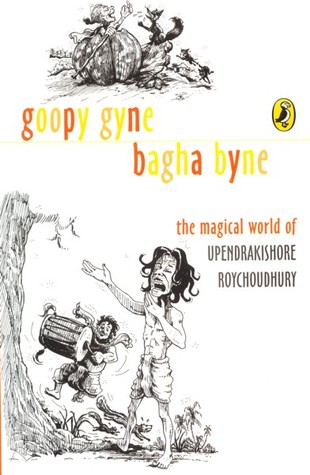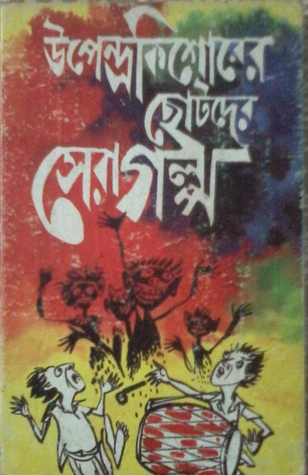
Upendrakishore Ray Chowdhury (Bangla: উপেন্দ্রকিশোর রায়চৌধুরী), also known as Upendrokishore Ray (উপেন্দ্রকিশোর রায়) was a famous writer, painter, violin player and composer, technologist and entrepreneur.
He was the father of the famous writer Sukumar Ray and grandfather of the renowned film-maker Satyajit Ray. Upendrakishore Ray Chowdhury was a product and leading member of the Brahmo Movement that spearheaded the cultural rejuvenation of Bengal. As a writer he is best known for his collection of folklore; as a printer he pioneered in India in the art of engraving and was the first to attempt color printing at the time when engraving and color printing were also being pioneered in the West.
Upendrakishore was born on 12 May 1863 in a little village called Moshua in Mymensingh District in Bengal, now in Bangladesh. He spent most of his adult life in Kolkata, where he died on 20 December 1915, aged only fifty-two. He was born Kamadaranjan Ray, to Kalinath Ray, a scholar in Sanskrit, Arabic and Persian. At the age of five, Kamadaranjan was adopted by Harikishore, a relative who was a zamindar in Mymensingh (now in Bangladesh). Harikishore renamed his adopted son Upendrakishore, and added the honorific ‘Raychaudhuri’ as a surname. Upendra passed the Entrance examination in 1880 with scholarship from Mymensingh Zilla School. He studied for a while at Presidency College, then affiliated with the University of Calcutta but passed BA examination in 1884 from the Calcutta Metropolitan Institution (now Vidyasagar College). Upendra took to drawing while in school. He published his first literary work in the magazine Sakha in 1883.
Upendrakishore first introduced modern blockmaking, including half-tone and colour block making, in South Asia. In 1913 he founded what was then probably the finest printing press in South Asia, U. Ray and Sons at 100 Garpar Road. Even the building plans were designed by him. He quickly earned recognition in India and abroad for the new methods he developed for printing both black & white and color photographs with great accuracy of detail.
Upendrakishore's greatest contribution was in the field of children's literature in Bengali. He did most of the illustrations of his books himself. In April 1913, Upendrakishore started the magazine Sandesh, a popular children's magazine in Bengali that is still published today. It was the first magazine for children in India that had coloured pictures, and it became an institution in Bengal.
Upendrakishore embraced the liberal religious movement of Brahmo Samaj in 1883, after the death of his foster-father and he was a deeply religious man. But his scientific bent of mind is reflected in the numerous science articles he wrote for children. He published two remarkable books on popular science. His scientific interests were further nurtured by his close friendship to the scientists Jagadishchandra Bose and Prafullachandra Ray, all of whom lived and worked very close to each other. Also a musician, Upendrakishore wrote two books about music.









